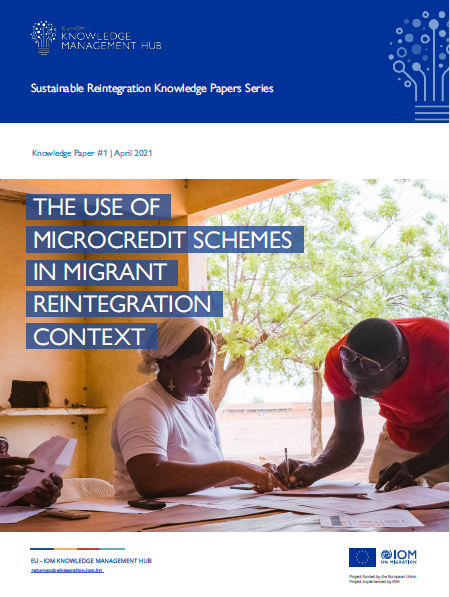Knowledge Paper #1 - The use of microcredit schemes in migrant reintegration context

This Knowledge Paper is the first issue of the Sustainable Reintegration Knowledge Papers Series published by the EU-IOM Knowledge Management Hub (KMH).
Microfinance, and more specifically microcredit, is regularly mentioned by reintegration practitioners and experts when discussing avenues to strengthen the sustainability of migrants’ reintegration. Yet, very few migrant reintegration programmes have included microcredit schemes as a form of or as a complement to reintegration assistance. Microcredit appears to have significant advantages that could be leveraged to improve reintegration sustainability, and that plead for its inclusion in reintegration programming. By increasing the resources available to returnees and allowing them to access capital even in situations where they cannot meet the requirements set by traditional banks to access loans, microcredit seems particularly suitable to returning migrants. However, it is also increasingly criticized for some of its downsides, including its high interest rates.
This Knowledge Paper aims at providing leads to reintegration practitioners considering including a microcredit component in their programme, and more generally targets any individual involved in migrant reintegration (including at policy and programme design levels) and in microfinance (including microfinance institutions’ staff considering targeting returnees). It seeks to analyse how microcredit could be used in the context of migrant reintegration programmes and to address the following questions:
- Does microcredit constitute a valid alternative or complement to reintegration grants usually provided in the framework of reintegration programmes? If so, in which contexts or under which conditions can it be envisaged?
- What are the key considerations to take into account when designing and implementing interventions linking microcredit to migrant reintegration?
- And what can reintegration organizations do to facilitate returning migrants’ access to microcredit, if relevant?
| Attachment | Size |
|---|---|
| Knowledge Paper - EN | 8.6 MB |
| Executive Summary - EN | 2.62 MB |
| Monographie - FR | 8.45 MB |
| Résumé - FR | 2.59 MB |
| Documento de conocimiento - ES | 8.46 MB |
| Resumen ejecutivo - ES | 2.59 MB |
